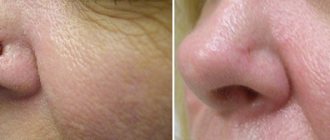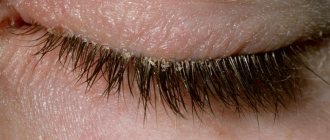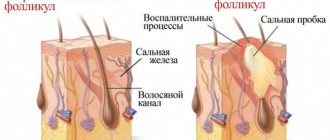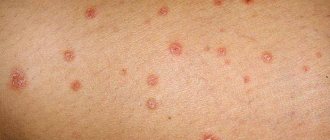Many parents believe that chicken pox is a harmless infection that does not require any treatment other than lubricating the rash with a solution of brilliant green. Is it really?
- Routes of infection
- Symptoms and manifestations in children
- Complications of the disease in adults
- Are antivirals needed for chickenpox?
- Myths about the disease
Chickenpox is an acute infectious disease of viral etiology, which is characterized by the appearance of a characteristic blistering rash against the background of general intoxication of the body. This disease was first mentioned in the medical literature of the 16th century. At first, many people confused it with smallpox called variola. The German doctor O. Vogel called chickenpox varicella, and after numerous epidemics in the 19th century, this disease began to be considered a separate nosological form. In 1911, the Brazilian doctor E. Aragao discovered virus bodies in the bubbles, and the virus itself was isolated from them in the 40s. XX century.
Since then, scientists have been continuously studying this disease, trying to find the most effective treatment methods.
Learn more about the characteristics of chickenpox
In the process of scientific research, it was established that the causative agent of chickenpox (Herpes zoster) is a DNA-containing virus classified as human herpes virus type 3, included in the family Herpesviridae, subfamily Alpha Herpesviridae. In the blisters that form on the skin during chickenpox, this virus is contained in large quantities, which determines the high contagiousness of the virus. The virus that causes chickenpox in children causes shingles in adults. So one pathogen manifests itself differently depending on the age of the patient. Chickenpox in adults is also possible, but such cases are extremely rare. The disease is one of the most common in childhood and is a ubiquitous infection, that is, it is characterized by widespread distribution. The age distribution of the disease is influenced by climate and lifestyle characteristics.
In temperate climates, chickenpox occurs in 90% of children under 12 years of age, mainly in the cold season. Although chickenpox is considered a childhood disease, it can also be diagnosed in adults, especially if the appropriate vaccinations have not been received. The incidence in cities is more than twice as high as in rural areas. According to some reports, the economic damage caused to the country by this infection can be comparable to the losses associated with acute respiratory diseases and influenza.
Chickenpox symptoms
A rash all over the body is the main symptom of chickenpox, and this rash also appears on the mucous membranes. Chickenpox in the mouth is an enanthema. The child's temperature rises, general weakness appears, muscles and head ache. Usually this condition lasts 2-5 days. With chickenpox there may not be a fever - it all starts with a rash.
The incubation period for chickenpox is 10-21 days from the moment of infection. The disease usually lasts 5-10 days, although there are cases of the disease lasting 3 weeks.
With a mild form of chickenpox, the child may not be bothered by anything: he will be active and in a good mood, and only a small rash on the body will indicate that the baby is sick.
Chickenpox by day
Photos from open sources
Antipyretics
Adults who did not develop immunity to chickenpox in childhood sometimes find it difficult to tolerate this disease. The debilitating high temperature lasts for several days. It must be knocked down in order to alleviate the patient’s condition and prevent new rashes from spreading.
If you have chickenpox, you cannot relieve the fever with aspirin; it is better to use paracetamol. You need to take the drug starting at +38 C. Paracetamol is also safe for chickenpox in pregnant women, but in this case the dosage is much less. It must be remembered that the rules of use are as follows:
- no more than three days;
- with an interval of 4-6 hours;
- single dose 500-1000 mg;
- maximum daily dose - 4 grams;
- 1-2 hours after eating;
- drink plenty of water.
You can take cold medicines like Coldrex and others, they are based on the same paracetamol. But this is only in the early days, when the disease is just beginning. In the decisive phase, you cannot do without paracetamol in its pure form. The disease occurs with severe pain in the head, joints, general weakness, fever and other symptoms. The thermometer rises from +38.5 C and above.
Other remedies for fever
Nurofen is excellent as an adjuvant for the treatment of chickenpox. It has a strong anti-inflammatory effect, is highly digestible by the body, the effect occurs within the first half hour. Adults need to take Nurofen in tablets (200 mg), syrup is intended for children. Should be taken:
- no more than four days;
- every 5-6 hours;
- once 200-400 mg;
- do not exceed 1200 mg per day.
Ibuklin is a complex action drug. The composition harmoniously combines paracetamol (325 mg) and ibuprofen (400 mg). The combination of these substances is many times more powerful than each one alone. Contraindications include age under 18 years, pregnancy, renal or heart failure, ulcerative lesions of the gastrointestinal tract and some other cases. Admission rules:
- no more than three tablets per day;
- three times a day, 1 piece;
- the interval with food intake is 2-3 hours, before or after;
- no more than 3 days;
- drink with water without chewing.
There are a number of drugs that effectively help reduce body temperature, but they should not be taken if you have chickenpox. They can cause serious complications in the patient’s body, for example, hemorrhages in the digestive tract, kidney failure. These are drugs such as Aspirin, Amidopyrine, Analgin, Phenacytin.
How is chickenpox transmitted?
Most often, children from 3 to 7 years old suffer from chickenpox. In children under one year of age, adolescents and adults, chickenpox is a rare occurrence. The mode of transmission of chickenpox is airborne. The causative agent of the disease is herpes virus type 3 (varicella-zoster). This virus begins to rapidly multiply in the blood and lymph of the sick person, and when it ends up in the upper layers of the skin, the same rash of chickenpox appears.
Read also Epstein-Barr Virus: what it is and how to treat What is Epstein-Barr Virus and what drugs are prescribed for its treatment.
Survey
To make a diagnosis, a clinical examination and indication of the fact of contact with a patient with chickenpox is sufficient. Specific laboratory examination is required if necessary to differentiate the disease from other conditions accompanied by a blistering rash.
Laboratory confirmation of chickenpox:
- detection of viral DNA in the blood using PCR - polymerase chain reaction;
- an increase in specific IgM and IgG antibodies in the blood by 4 times or more in 10 days.
- In a general blood test, a decrease in leukocytes and neutrophils and an increase in lymphocytes are observed. In some patients, the level of monocytes increases to 10%. A general blood test has no diagnostic value.
If complications are suspected, an X-ray of the lungs, an ultrasound of the heart, and an MRI of the brain are performed.
Complications of chickenpox
The main and dangerous complications of chickenpox are myocarditis and encephalitis. Such complications are typical for adults and those children who have weakened immune systems.
In addition to ordinary chickenpox, there are bullous, gangrenous and hemorrhagic forms. These are severe types of disease with complications. If the wounds become infected with a bacterial infection, another complication may develop - pyoderma. This complication often occurs in children.
The rash with ordinary chickenpox leaves no traces, but with such suppuration, scars are possible.
Forecast
The prognosis for chickenpox is favorable. When observing 1145 patients aged 16-80 years, the following distribution of severity levels was observed:
- light - 7.2%;
- average - 84.8%;
- heavy - 8%.
Death occurred in four patients, giving a mortality rate of 0.34% in this study. Deaths were caused by complications - pneumonia, myocarditis, encephalitis. People with blood diseases, immunodeficiencies, and malignant tumors are at greatest risk of complications.
Sources:
- Chicken pox: adults at risk. — excerpts from the state report “On the state of sanitary and epidemiological well-being of the population of the Russian Federation.” Publishing house "Russian Doctor", November, 2022.
- Anthony J Papadopoulos, MD. Chickenpox Medication. - English-language database of current medical data Medscape, August, 2020.
- Margot L. Savoy, MD, MPH, (Lewis Katz School of Medicine at Temple University). Chickenpox vaccine. - MSD reference book, professional Russian version, July, 2022.
- Yushchuk N.D. Doctor of Medical Sciences, Academician of the Russian Academy of Medical Sciences. Chicken pox in adults. — medical scientific and practical portal “Attending Physician”, January 2000.
- Anne A. Gershon. Is chickenpox so bad, what do we know about immunity to varicella zoster virus, and what does it tell us about the future? — The Journal of infection, Jun 2022.
- Golovko M.G. Poryadina G.I. Chickenpox in adult patients on an outpatient basis. — General Medicine, April 2015.
How to treat chickenpox
Chickenpox is treated symptomatically: with antipyretic drugs, antihistamines in the form of tablets or ointments for external use. In some cases, taking antiviral medications is recommended to help the body fight off the infection faster. Mouth ulcers heal well with sea buckthorn oil and Solcoseryl ointment. You can also rinse your mouth with weak solutions of furatsilin, soda, and potassium permanganate. Herbal decoctions diluted with alcohol tinctures of propolis or calendula are also suitable.
Solcoseryl dental adhesive paste
Meda Pharma, Switzerland
Wound healing, angioprotective, membrane stabilizing, regenerating, cytoprotective, antihypoxic drug, which is available in the form of an injection solution, gel and ointment for external use.
from 172
1.0 1 review
1260
- Like
- Write a review
Preparations for treating skin ulcers relieve inflammation, disinfect, accelerate healing, dry, and reduce itching.
Rivanol
"Rivanol" is an antiseptic for external use in the form of a solution, effective in combating mainly coccal microorganisms (streptococci, staphylococci). It is these bacteria that usually cause complications with chickenpox (carbuncles, boils). "Rivanol" is used to spot treat ulcers 3-3 times a day. Contraindications: kidney problems and pregnancy.
Rivanol 0.1%
Dina+, UK
Rivanol is an antiseptic, has antimicrobial activity, fights coccal microorganisms, and is used in gynecology, urology, surgery, dermatology, and ophthalmology.
from 146
129
- Like
- Write a review
Five myths about chickenpox
The best cure for chickenpox is brilliant green
The most “popular” antiseptic in the form of a solution of brilliant green is widely used to prevent scratching and bacterial infections. An interesting fact is that “green stuff” is also used to mark new elements of a rash on the skin. Old elements, previously smeared with green paint, fade, but new ones remain bright because the green paint was applied recently. This helps the doctor at the appointment to assess the development of the disease.
But “brilliant” does not help against the virus, since it remains on the surface of the skin and does not penetrate deeper. There are other effective remedies and gels for external use that will help defeat the virus. At high temperatures, antipyretic drugs are used.
There is no cure for chickenpox, you just have to wait.
In fact, with chickenpox, it is still necessary to fight the itching and not allow the child to scratch the skin. Antiviral drugs will help you quickly cope with the virus and recover. And if ulcers appear on the skin or bacterial pneumonia develops, antibiotics are prescribed. In severe cases of chickenpox, the patient may be hospitalized in a hospital.
A child can be bathed only on the 5th day after chickenpox
Bathing in warm water relieves the child's condition and helps keep the skin clean. The main thing is not to rub the skin with a towel after taking a bath, so as not to damage the bubbles and dried crusts on the skin.
You only get chickenpox once in a lifetime.
After having chickenpox, many people remain immune for life. However, the virus, which remains in the body forever in adults, can be activated with decreased immunity, stress and other negative factors. In this case, they talk about shingles.
Chickenpox is a “mild” disease
The course of chickenpox varies. Sometimes there are very few blisters on the skin, the body temperature does not rise and the state of health is relatively good. But in other cases there are a lot of rashes, new ones constantly appear, body temperature rises to 39-40 0C. To prevent this, you must remember to consult a doctor for advice and timely use of antiviral drugs.
Reference and information material
Author of the article
Belyaev Dmitry Alexandrovich
General doctor
- The drug VIFERON®, rectal suppositories is registered in the State Register No. P N000017/01 (First Registration Certificate No. 96/432/5 dated December 31, 1996). Other interferon preparations approved for use in newborns and pregnant women are registered in the State Register after July 12, 2009.
- Timchenko V.N., Chernova T.M. MODERN ASPECTS OF ANTI-VIRAL THERAPY OF CHICKENZOX IN CHILDREN, Children's infections, 2011.
Loading...
Take other surveys
Tsindol
“Tsindol” for chickenpox perfectly relieves inflammation, disinfects wounds, and dries out burst blisters. The suspension should be used to treat the rash 3-5 times a day, depending on the severity of the condition. "Tsindol" is completely safe, so it is prescribed to children under one year of age and to pregnant women. The only contraindication is intolerance to zinc oxide.
Tsindol
Yaroslavl Pharmaceutical Factory, Russia
Diaper rash, diaper rash, prickly heat, dermatitis, ulcerative skin lesions, superficial wounds, eczema in the acute phase, herpes simplex, streptoderma, trophic ulcers, burns, bedsores.
from 36
567
- Like
- Write a review
Calamine
Calamine topical lotion is based on zinc and calamine oxide. The medicine for chickenpox relieves itching, irritation and inflammation well, and works as an antiseptic. “Calamine” is also as harmless as possible, but is not suitable for those who have individual sensitivity to zinc.
Calamine
The drug Calamine lotion is used in dermatological practice, in the treatment of diseases accompanied by itchy skin.
Therefore, the lotion is prescribed for the complex treatment of chickenpox, eczema, and psoriasis. Used for dermatitis, acne, herpes. Used in the treatment of skin rashes, herpes zoster, urticaria, rubella, etc. from 225
821
- Like
- Write a review
Furacilin
Wounds with chickenpox should be treated with a 0.02% solution of Furacilin 3-4 times a day (it is better to use a cotton pad). The product relieves inflammation, kills germs, and dries wounds well. "Furacilin" can also be used for ulcers on the mucous membranes.
Furacilin solution
Samaramedprom OJSC, Russia; PJSC "Biosintez", Russia; JSC Dalkhimfarm, Russia; Vips-Med, Russia
Externally: purulent wounds, bedsores, stage II – III burns, minor skin damage (including abrasions, scratches, cracks, cuts).
Locally: blepharitis, conjunctivitis, boil of the external auditory canal; osteomyelitis, empyema of the paranasal sinuses, pleura (washing the cavities); acute external and otitis media, tonsillitis, stomatitis, gingivitis. from 36
5.0 2 reviews
94
- Like
- Write a review
Chlorhexidine
"Chlorhexidine" (or its analogue "Miramistin") for chickenpox is applied to the vesicles 2-3 times a day. The product is also suitable for rinsing your mouth. "Chlorhexidine" is a broad-spectrum antiseptic with antimicrobial and antifungal effects.
Chlorhexidine
Update, Russia
Prevention of sexually transmitted infections (chlamydia, ureaplasmosis, trichomoniasis, gonorrhea, syphilis, genital herpes).
Disinfection of purulent wounds, infected burn surfaces; treatment of infections of the skin and mucous membranes in surgery, obstetrics and gynecology, urology (urethritis, urethroprostatitis), dentistry (gingivitis, stomatitis, aphthae, periodontitis, alveolitis). from 10
1072
- Like
- Write a review
Poksklin
Cooling mousse "Poksklin" for chickenpox has a completely natural base (panthenol, aloe vera, chamomile and lavender). The product cools and reduces scratching, so scars do not form. “Poksklin” relieves inflammation, has an antiseptic effect and accelerates the healing process of wounds.
Poksklin
PharmaVal AS, Netherlands
Poksklin cooling hydrogel was developed to relieve the symptoms of chickenpox over large areas of the body.
While spreading thick creams and ointments over the body can damage the blisters, the cooling hydrogel is very easy to apply and does not cause friction in sensitive areas when applied to the skin. PoxClean provides an immediate cooling effect, which significantly relieves itching. For this purpose, it can be used as many times as necessary. PoxClean contains the ingredient 2QR, a biologically active antibacterial complex. This component helps your child's natural skin immunity to block harmful bacteria. The antibacterial component in PoxClean is a polysaccharide obtained from the plant extract of Aloe Vera. It creates a barrier on the skin, thereby preventing the penetration and spread of bacteria on the surface of the skin. from 272
5.0 1 review
405
- Like
- Write a review
Fenistil
"Fenistil" is a safe antihistamine (antiallergic) drug of a new generation. To reduce the itching of chickenpox, antihistamines are used, this is especially true for children who cannot control themselves and scratch the wounds. It is not advisable to use Fenistil gel for chickenpox, since due to the treatment of large areas of the body it can be toxic to the body. But Fenistil drops for chickenpox are a good way to relieve itching. The number of drops is calculated based on the patient's weight.
Fenistil
GlaxoSmithKline, GSK, UK
The antiallergic effect of Fenistil is associated with competitive blockade of H1-histamine receptors.
Symptomatic treatment of allergic diseases such as: urticaria; allergic rhinitis; food allergies; drug allergy. Elimination of itching from: insect bites; chicken pox; atopic dermatitis. from 237
5.0 1 review
1191
- Like
- Write a review
Antihistamines for itching
The intense itching that usually accompanies chickenpox can be relieved with antihistamines. Antiallergic drugs help the patient relieve itching. Chickenpox rashes on the body should not be scratched, so as not to introduce infection into open wounds. Otherwise, the course of the disease will become significantly more complicated.
The most popular antihistamines:
| Order number | Drug name | Active substance | Single dosage, mg/piece. | Number of appointments per day |
| 1. | Claritin | loratadine | 10 /1 table or 2 tsp. syrup | 1 |
| 2. | Erius | desloratadine | 5 /1 table or 10 ml syrup | 1 |
| 3. | Loratadine | loratadine | 10 /1 table | 1 |
| 4. | Suprastin | chloropyramine | 25 mg/1 tablet. | 3-4 |
| 5. | Tsetrin | cetizirizine dihydrochloride |
| |
| 6. | Diazolin | mebhydrolin | 100-300/1-3 tab. | 3 |
Due to severe itching, a patient with chickenpox cannot sleep fully for the first two or three days. Antihistamines will help reduce pain. Most antiallergic drugs cause drowsiness and should be taken, if possible, before bedtime. Additionally, you can use sedatives:
- motherwort tincture;
- Valerian tincture;
- mild sleeping pill.
Taking sedatives will help normalize sleep and restore the body's strength. The patient has a hard time with chickenpox due to rash, itching, and high fever. We need to help the patient relax and fall into a deep, healing sleep.
Cetirizine
Doctors often prescribe Cetirizine (Zyrtec) for chickenpox. For children - in drops, for adults - in tablets. The drug relieves symptoms well in itchy allergic dermatoses, has no contraindications and is usually well tolerated.
Cetirizine
JSC VERTEX, Russia
seasonal and year-round allergic rhinitis and conjunctivitis (itching, sneezing, rhinorrhea, lacrimation, conjunctival hyperemia);
urticaria (including chronic idiopathic urticaria); hay fever (hay fever); itching; angioedema (Quincke's edema); itchy allergic dermatoses. from 36
549
- Like
- Write a review
Disease prevention
The main preventive method is vaccination. It is important to do this:
- To all children in the epidemiological outbreak.
- Persons in contact with chickenpox patients.
- Patients at risk (with chronic diseases, metabolic pathologies, employees of medical institutions).
- Equally important is the isolation of patients during the contagious period. In case of severe or atypical course of the pathology, it is important to go to the hospital to isolate patients in boxes.
Fenkarol
Fenkarol is a relatively new anti-allergy drug on the pharmaceutical market, but has already proven its effectiveness and safety. The product is good at relieving itching and inflammation due to chickenpox. Typically, Fenkarol is well tolerated and has no side effects. The only contraindication is pregnancy.
Fenkarol
Olaina Chemical Plant, Latvia
- hay fever;
- acute and chronic urticaria; - angioedema; - allergic rhinitis; — dermatoses (including eczema, psoriasis, atopic dermatitis); — neurodermatitis; - skin itching. from 176
511
- Like
- Write a review
Chickenpox vaccine for adults
For specific prevention, a live vaccine is used. In case of contact with an adult with chickenpox, the vaccine is administered within 72 hours. If a person has contraindications to vaccination, he is given immunoglobulin - normal human or specific zoster.
Contraindications to vaccination
- severe allergic reactions in general and to chicken eggs in particular (administration of the vaccine in the presence of an allergy leads to the development of anaphylactic shock, which can be fatal);
- allergy to aminoglycoside antibiotics - streptomycin, amikacin, gentamicin;
- a sharp decrease in immunity (in people with severely decreased immunity, vaccination causes the development of chickenpox);
- probable or confirmed pregnancy.
Preventive vaccination of adults can be carried out at any age. Two vaccinations should be given 6-10 weeks apart. Vaccination is not included in the National Vaccination Calendar. It is done only in case of contact with a patient or at the request of the person himself at his expense.
Vaccination is easily tolerated; side effects include a short-term increase in temperature. The duration of protection after vaccination is 10-15 years. After vaccination, a person is not contagious unless single blisters appear on the skin.
It is recommended to prevent contact between a vaccinated person and a person who has not had chickenpox for three days.
Vaccination during pregnancy and after it
If pregnancy is planned, the vaccination must be done no later than three months before its onset. Vaccinations are contraindicated during pregnancy.
Breastfeeding is NOT a contraindication to chickenpox vaccination. Thus, a nursing mother can be vaccinated.











